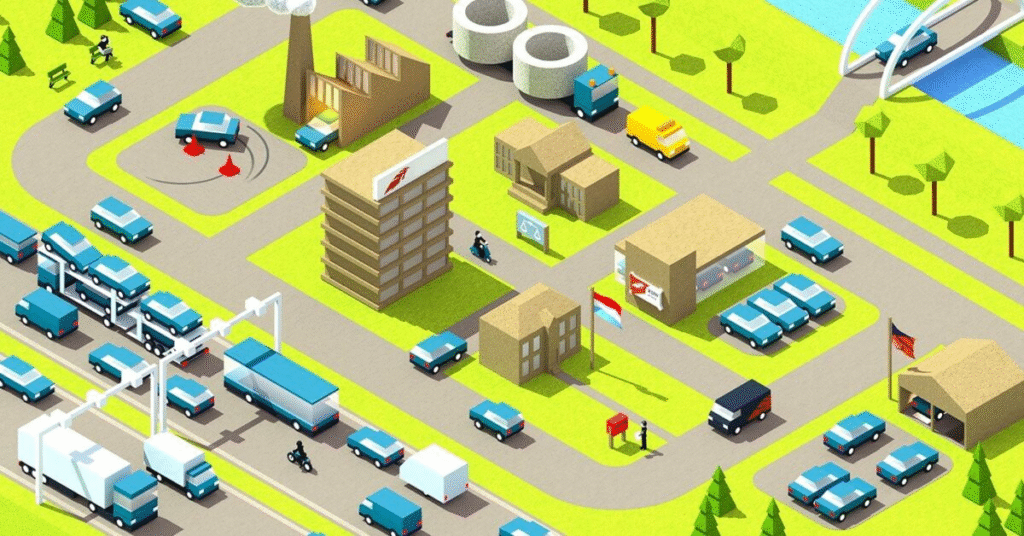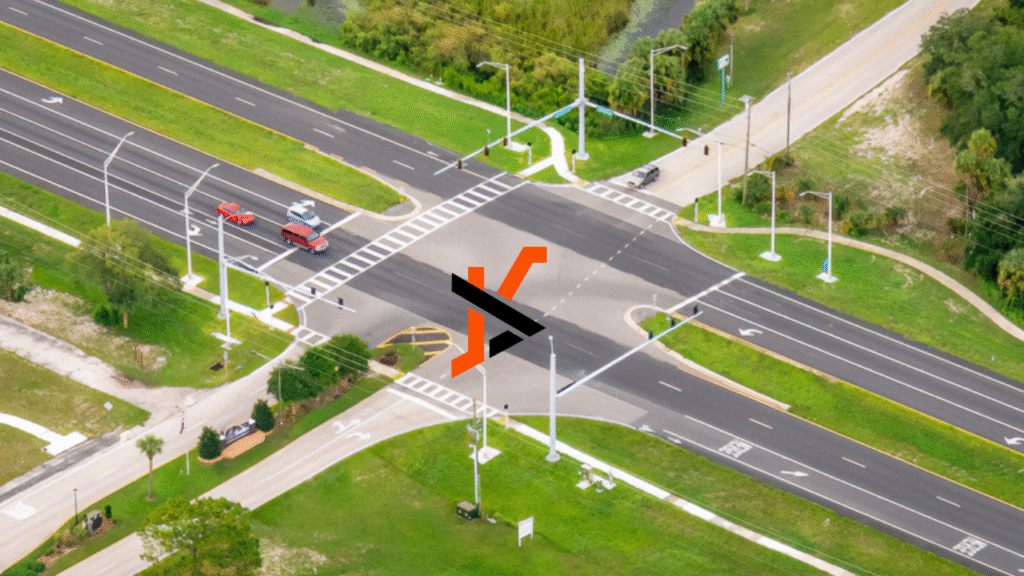A Traffic Impact Assessment (TIA) is a study that looks at how a new project, like a building or shopping center, will affect local traffic. It helps cities make smart choices about roads and safety. This guide explains everything in simple terms, so anyone—even a 10-year-old—can understand it.
What Is Traffic Impact Assessment in Simple Words?
A Traffic Impact Assessment, or TIA, is like a check-up for roads. Imagine someone wants to build a big store or lots of houses. A TIA helps city planners know if traffic will get worse because of that new building. It checks how many more cars, trucks, or buses might use the roads near that project.
Let’s say a new school is opening in your neighborhood. More parents will drive their kids in the morning and afternoon. That means more traffic, more waiting at stoplights, and possibly more chances for accidents. A TIA looks at these things before the building starts. It helps experts make better decisions, like whether to add a stop sign or widen the road.
So, in the simplest terms, a Traffic Impact Assessment is a study that checks how a new building or project will change traffic, and what can be done to make sure the roads stay safe and smooth.
Why Do We Need Traffic Impact Assessments?
You may wonder: why not just build and deal with traffic later? That’s a bad idea. Once a building is up, it’s much harder—and more expensive—to fix traffic problems. A Traffic Impact Assessment helps us prepare in advance.
Here are some clear reasons why it’s needed:
- To avoid traffic jams: A TIA checks if a project will make streets busier, so changes can be made early.
- To keep roads safe: More cars often mean more chances for accidents. A TIA finds out where and how this can happen.
- To guide smart planning: City officials use the TIA to decide if the project is a good idea or if it needs changes.
- To protect people and the environment: Less traffic congestion also means cleaner air and safer neighborhoods.
Without a TIA, we’re just guessing what will happen. That’s risky and unfair to people who already use those roads.
When Is a Traffic Study Needed?
Not every small building project needs a TIA. But for bigger projects, it’s a must. Cities usually have rules about when a traffic study is required.

Before Starting Construction
Before someone builds a new shopping mall, school, hospital, or large apartment building, they need to ask: “Will this add more cars to nearby roads?” If the answer is yes, the city will likely require a Traffic Impact Assessment. It’s part of the permission process to make sure everything is safe and ready before construction starts.
Big Projects Need It
If a project is large—like a stadium, warehouse, or office complex—it will bring in hundreds or even thousands of vehicles daily. These big projects can change traffic patterns a lot. That’s why they always need a full TIA. Sometimes even medium projects, like a daycare center or small clinic, might need one if they’re built near busy intersections.
Safety First
Sometimes, a project may not be very large, but it’s located in a high-risk area—near schools, hospitals, or narrow roads. In these cases, even small increases in traffic can create danger. A TIA helps spot these risks and suggest ways to fix them—like new sidewalks, crossing guards, or better signs.
Who Does the Traffic Impact Assessment?
A Traffic Impact Assessment is done by experts called traffic engineers or transportation planners. These are people trained in how roads, vehicles, and people move. They work either for the city or for a private company hired by the person building the project.
These experts visit the area, look at traffic numbers, and run models to predict what will happen in the future. They use software tools like Synchro, SIDRA, HCS, and VISSIM to test traffic flow and delays. Their job is to make sure everything is safe, smooth, and in line with city rules.
What Happens During the Traffic Study?
When a traffic expert starts a TIA, they follow a step-by-step process. It’s like putting together a big puzzle. They look at how traffic flows now, what might change, and how to keep things working well.
Here’s what usually happens:
- Visit the site: Experts go to the place where the new project will be built. They observe how many cars pass by, where people walk, and where buses stop.
- Collect data: They count cars during busy hours (like morning and evening rush) and record how fast traffic moves. They also check accidents, speed limits, and road types.
- Make traffic predictions: Using this data, they predict how many new vehicles will be added once the project is done.
- Find the problems: The expert looks at where roads might get crowded or unsafe.
- Suggest solutions: If problems are found, they suggest ways to fix them—like new turn lanes, better traffic lights, or pedestrian crossings.
- Write a report: Everything is written clearly in a Traffic Impact Report, which is shared with city officials for approval.
What Are the Key Parts of a Traffic Impact Report?
A Traffic Impact Report is like a detailed book about what traffic will look like after a project is built. It includes data, maps, and solutions. Let’s break down the most important parts.

Car Count and Road Use
This section answers the question: How many vehicles are using the road now, and how many more will come because of the new project?
Experts collect data on car counts during peak hours—like 7–9 AM and 4–6 PM—and list where vehicles come from and where they go.
It also looks at vehicle types—cars, buses, delivery trucks—and how often they use the roads. Knowing this helps figure out what kind of road upgrades might be needed.
Problem Spots
Here, the report highlights areas where traffic is expected to get worse. These are often:
- Intersections that already have long waits
- Roads that are too narrow
- Places where accidents happen often
- School zones or hospital areas with sensitive traffic needs
This part of the report helps city planners see where action is needed the most.
Fixing Ideas
Every good TIA comes with solutions. These are ways to fix or reduce the problems found. Fixes might include:
- Adding turn lanes or traffic signals
- Improving sidewalks or bike lanes
- Changing speed limits or adding signs
- Creating new entry or exit points for parking lots
- Using smart traffic lights that change with traffic flow
These ideas help keep roads safe and smooth, even after the project is complete.
Benefits of Doing a Traffic Impact Assessment
Doing a TIA might seem like a lot of work, but it brings many big benefits:
- Helps prevent traffic jams before they happen
- Improves road safety for drivers, bikers, and pedestrians
- Saves money by planning changes early, not later
- Gives clear answers to local communities who may worry about new projects
- Supports better public transport and walking paths
- Protects the environment by reducing extra car travel and pollution
Overall, a TIA gives everyone a chance to think ahead and build smarter, safer cities.
The Bottom Line
So, what is a Traffic Impact Assessment?
It’s a careful study that checks how a new project will affect local traffic. It helps city planners and builders understand what’s needed to keep roads working well and people safe. Whether it’s a new school, mall, or office, a TIA is a key part of smart city planning.
It’s not just about cars. It’s about making sure the whole community—drivers, walkers, bikers, and families—can move safely and easily around town. So next time you see a construction sign, remember: someone probably did a Traffic Impact Assessment to make sure everything goes smoothly.

